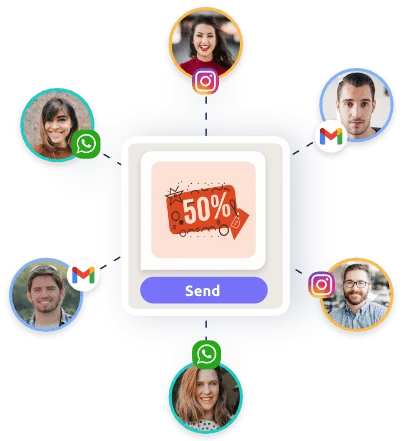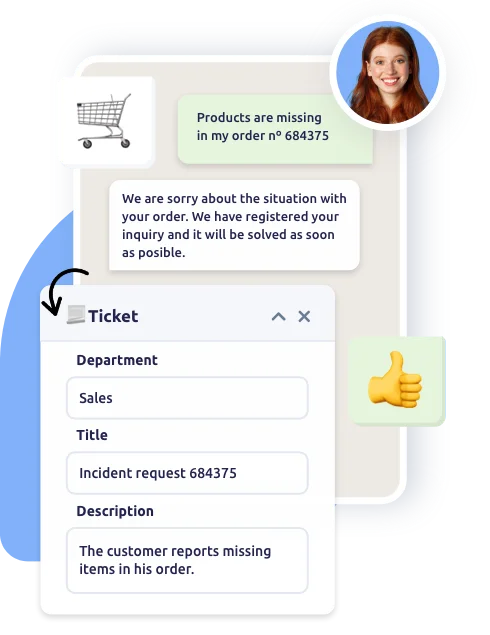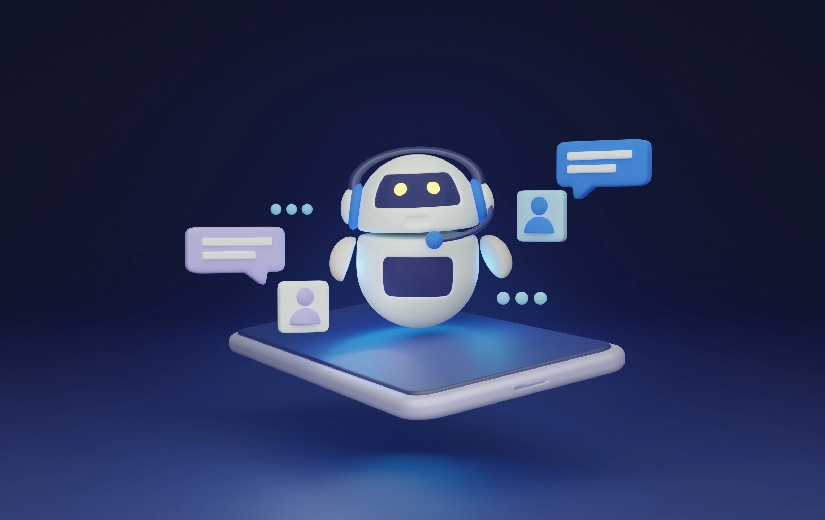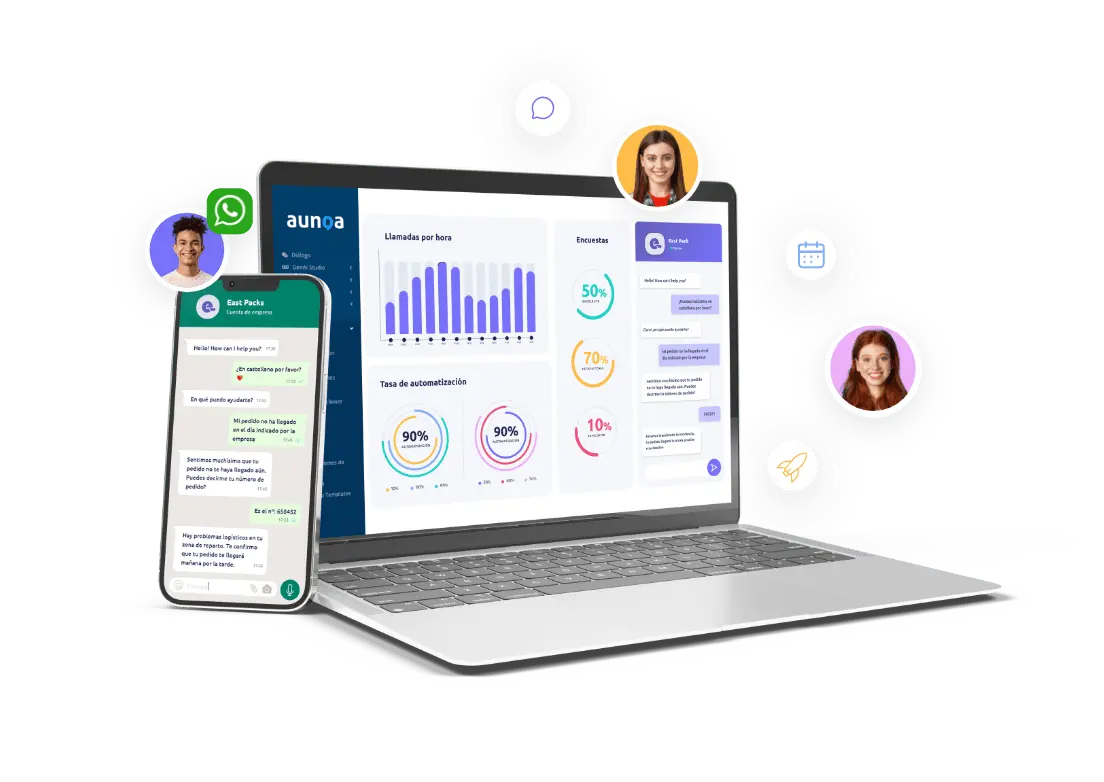Although the use of chatbots has become widespread among businesses, the benefits they can offer largely depend on their configuration and functions. Read on to learn about the different types of chatbots that exist.
While the thought of a chatbot may immediately bring artificial intelligence to mind, this is not necessarily the case.
Moreover, a chatbot does not have to be linked to AI, nor is it something limited to large companies due to the elaborate configuration and maintenance they require.
Among the types of chatbots, there are very simple ones that solve straightforward yet very useful problems, accessible to any business. Beyond distinguishing between dumb chatbots and smart chatbots (also known as AI chatbots due to their use of AI techniques), at Aunoa, we believe a proper classification of chatbots can be made by following three parameters:
- The way it interacts with users.
- Its practical application.
- The technology used.
Types of chatbots according to their way of interacting with the user 👨
If we look at the way in which chatbots interact with the user, we can classify them into three types of chatbots.
1. Text chatbots
In the first, chatbots interact with the user only by text, that is, in written form using only words, and are the most basic type. They tend to be used especially in channels with more format limitations, such as SMS.
2. Rich text chatbots
The second type, the most used nowadays, uses text, but enriched with images, emoticons, gifs, interactive buttons, etc. This makes the interaction much more pleasant, as well as informal and personal communication, always modulated according to the company’s communication profile.
3. Voice chatbots
And in the third type of chatbot, we interact directly with the voice; this type of assistants, very popular following the emergence of voice assistants such as Siri, Cortana or Alexa, still have a limited market, as there is no defined habit of using these channels by companies, beyond personal use and their programming environments are restrictive.
| Types of Chatbots according to their way of interacting with the user | Description | Recommended business types | Recommended business types |
|---|---|---|---|
| Text chatbots | Interact with the user exclusively through written text. They are commonly used in channels with format limitations, such as SMS. | Small businesses, customer service, technical support. | Easy implementation, low cost, suitable for simple communications. |
| Rich text chatbots | Use text enriched with images, emoticons, gifs, interactive buttons, etc. They improve interaction by making it more enjoyable, informal and personalized. | E-commerce, digital marketing, large companies. | Attractive and personalized interaction, higher user engagement, versatile for different platforms. |
| Voice chatbots | They interact directly with the user by voice. They are popular in personal environments, especially with voice assistants such as Siri, Cortana, or Alexa. | Domotics, customer service in telecommunications services, sectors with high use of technology. | Natural and fluid interaction, hands-free, accessible for visually impaired people. |
Types of chatbots according to their practical application 🔧
Chatbots can also be classified depending on their intended use. Thus, we can distinguish between three types of chatbots: those used for marketing tasks, those used for customer support and customer service, and chatbots for sales or ecommerce.
1. Marketing chatbots

Chatbots in marketing are basically used to generate leads and facilitate the collection of customer data, with which to subsequently create campaigns or simply improve the user experience.
2. Chatbots for support and customer serviceç

In customer support and customer service, chatbots represent a huge step forward in the improvement and automation of processes. They offer immediate service, and with absolute availability, solving one of the great historical problems of customer service centers, especially in times of campaign or peak.
Simply put, automating the questions that users ask most frequently has been shown to have a very high impact, as most user questions tend to deal with very similar issues.
3. Chatbots for sales or eCommerce

In the case of sales and e-commerce, this type of chatbots act as shopping assistants, facilitating the entire purchasing process from the beginning to the final payment. They make suggestions to users based on their profiles, help find products, inform the user about the status of their order or its return, and ultimately create a shopping experience that builds user loyalty.
| Types of Chatbots according to their practical application | Description | Recommended business types | Advantages |
|---|---|---|---|
| Marketing Chatbots | Used to generate leads, collect customer data and improve the user experience. Their main function is related to marketing tasks, such as creating campaigns based on the information collected. | Digital marketing companies, advertising agencies, growing businesses. | Lead generation, improved campaign segmentation, increased interaction with users. |
| Chatbots for support and customer service | Automate support and customer service processes, offering immediate services with constant availability. They resolve frequent problems efficiently, improving the customer experience and facilitating the self-management of some services. | Telecommunications companies, financial services, software companies. | Reduced support costs, 24/7 availability, quick resolution of frequent queries. |
| Chatbots for sales or eCommerce | They act as shopping assistants in e-commerce, facilitating the entire shopping process from search to checkout. They provide suggestions based on user profiles, report on order status and create a shopping experience that aims to build user loyalty. | Online shops, eCommerce platforms, retail businesses. | Increased sales conversion, personalisation of the shopping experience, improved customer satisfaction. |
What are the types of chatbots based on the technology used? 💻
Depending on the recognition and response technology they use, they can be classified into four types of chatbots: text interaction response or ITR, machine learning, keyword recognition and cognitive.
1. RTI chatbots
They do not usually use Artificial Intelligence. They work in a very simple way, with predefined menus and decision trees, like navigation.
Although this type of chatbot is not used for complex issues, it is very useful for the user or customer to be able to self-manage some services without the need for human attention, such as reporting incidents.
2. Machine learning chatbots
They use Artificial Intelligence and, therefore, their development and training is more complex.
They are capable of holding natural conversations and learning from experience, i.e. they use NLP (Natural Language Processing) and ML (Machine Learning) technologies and represent a very important qualitative leap, both in technology and functionality.
To this end, they work with large volumes of data and require constant training, both for improvement and to avoid falling into inappropriate behavior due to learning the negative traits of use of some users, a very common phenomenon in the field of AI.
3. Keyword recognition chatbots
They are somewhere in between. They do not use Artificial Intelligence, but work by identifying keywords in the conversational environment and providing programmed responses to those words.
Although they are simple and have obvious limitations, they can be very useful, especially as a complement or replacement for a traditional search engine in the function of answering frequently asked questions.
4. Cognitive chatbots
Also based on Artificial Intelligence and Machine Learning, they go a step further and are able not only to understand natural language and user intentions, but to interpret them within a much larger context.
This contributes to a much wider use of the chatbot, as it allows the user to change the linguistic context at any time, in other words to change the subject whenever he considers without the assistant ‘losing the thread’ of the conversation.
This last type of chatbots are the most complete, they combine the best of all models and are capable of carrying out all types of tasks, and although technologically they are infinitely more complex than those in the first block, the current state of the art allows their use is not unattainable for commercial use by companies.
| Types of Chatbots according to the technology used | Description | Recommended business types | Advantages |
| RTI Chatbots | They do not usually use Artificial Intelligence. They work with predefined menus and decision trees. They are useful for self-management of services without the need for human attention, such as incident reporting. | Businesses with repetitive queries and tasks, utilities, basic customer service. | Easy implementation, low cost, suitable for solving simple and repetitive tasks. |
| Machine learning chatbots | They use Artificial Intelligence, capable of holding natural conversations and learning from experience. They use NLP (Natural Language Processing) and ML (Machine Learning). They need constant training to improve and avoid misbehaviour. | Grandes empresas, plataformas tecnológicas, servicios financieros. | Conversaciones naturales, aprendizaje continuo, alta personalización y capacidad de manejar consultas complejas. |
| Chatbots de reconocimiento de palabras clave | Funcionan identificando palabras clave en el entorno conversacional y proporcionando respuestas programadas. Son útiles como complemento o reemplazo de un buscador tradicional para responder preguntas frecuentes. | Websites with FAQs sections, companies with repetitive queries, e-commerce. | Simple implementation, useful for frequently asked questions, improves user experience for specific searches. |
| Cognitive chatbots | Based on Artificial Intelligence and Machine Learning, they can understand natural language and the user’s intentions, interpreting them in a broader context. They allow you to change the subject without losing the thread of the conversation. cognitive | Advanced technology companies, high-level customer service, sectors with high variability of enquiries. | High capacity for contextual comprehension, handling complex conversations, adaptability to changes of subject. |
Choosing the type of chatbot that best suits the needs of the company is not an obvious task, because it is not a very developed sector and the options are not easy to find, so it is important to find similar use cases and be clear about the initial approach and where you want to go to make a progressive implementation.
In Aunoa we help you to design the most appropriate type of chatbot for your company with our own technology and through conversational artificial intelligence supervised and trained by our team of professionals.
Our service allows a record time implementation in conversational interfaces such as Whatsapp or Facebook, with the possibility of transferring conversations from the chatbot AI to the Call center to manage them quickly and efficiently.
Don’t miss the opportunity to get closer to your customers in the channels they use the most, through any type of chatbot. Schedule a demo now and get to know different types of chatbots in real time!






